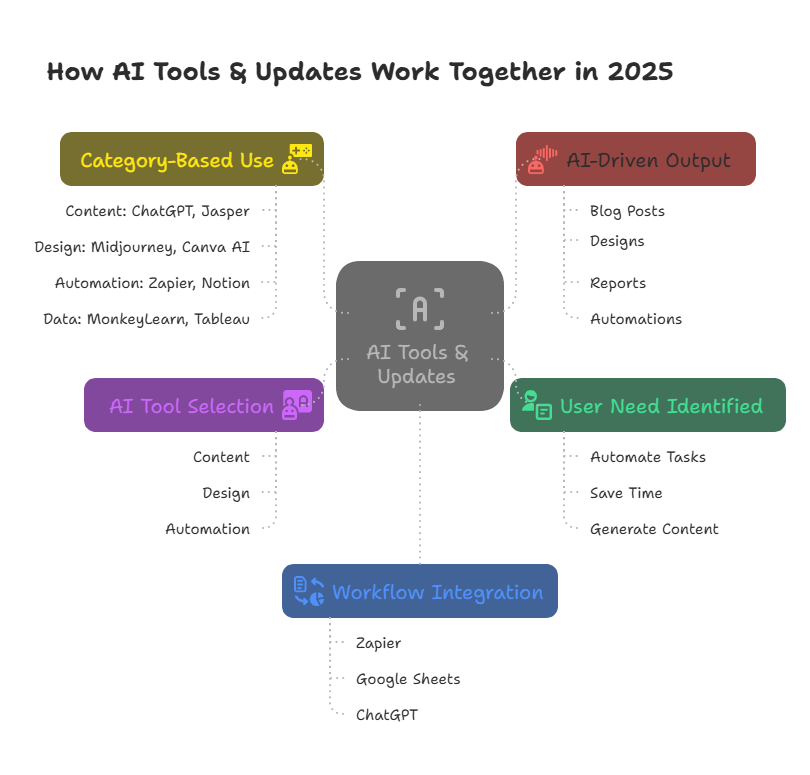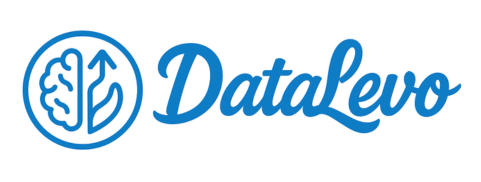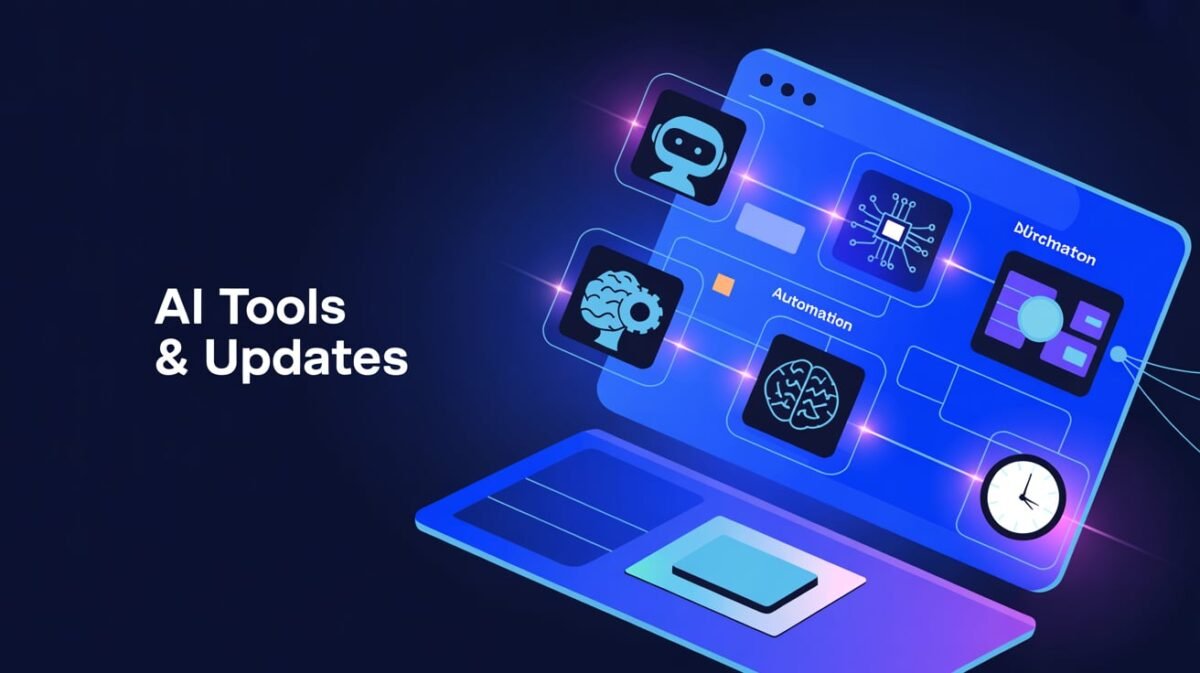Keeping up with the ever-expanding world of AI tools can feel overwhelming. Every week, new software platforms, apps, and updates flood the market promising to revolutionize productivity, creativity, and business operations. If you’ve ever found yourself wondering which tools are worth your time and which updates really matter, you’re not alone.
That’s exactly why I created this comprehensive guide on AI Tools & Updates. Here, you’ll find the latest insights on must-have AI software platforms, the newest trends in AI automation, and practical advice on choosing the right tools for your needs. Whether you’re a content creator, developer, or business owner, this post will help you stay ahead without getting lost in the noise.
The AI Tool Explosion: Why It’s Hard to Keep Up
The pace at which AI tools are developing and flooding the market is truly staggering. According to Statista, the global AI software market is projected to surpass $126 billion by 2025, reflecting just how much investment and innovation are driving new tools daily. But with this rapid growth comes a big challenge: how do you sift through the noise to find the tools that actually add value to your work or business?
Every month, hundreds of Artificial Intelligence tools and software platforms launch — each promising to be the next big thing in AI automation, content creation, design, or data analytics. Whether it’s a new AI-powered writing assistant that claims to make blogging effortless or a cutting-edge automation tool designed to save you hours of repetitive work, the options are overwhelming.
To help make sense of it, here’s a breakdown of the most common categories of AI tools you’ll encounter today:
- AI Writing & Content Creation Tools: These help you generate blog posts, marketing copy, or even poetry, using advanced natural language processing. Some popular ones include Jasper, ChatGPT, and Writesonic.
- Design & Creativity Tools: AI-driven image and video generators like Midjourney or DALL·E 3 are transforming how creatives work, letting anyone generate stunning visuals with just a few prompts.
- Automation Platforms: Tools such as Zapier and Make (formerly Integromat) are increasingly incorporating AI to automate workflows, freeing up valuable time.
- Data Analytics & Visualization Tools: AI-powered analytics platforms like Tableau and Power BI leverage machine learning to uncover insights hidden in vast datasets.
- AI Development Platforms: APIs and toolkits from companies like OpenAI, Google, and Microsoft enable developers to build custom AI applications.
With so many categories and new players popping up constantly, it’s easy to feel overwhelmed or stuck in “tool paralysis.” That’s why keeping a pulse on the latest AI tools & updates is essential — it empowers you to pick the right solutions that align with your goals and avoid wasting time on hype.
Top AI Tools in 2025 (So Far)
In 2025, the AI tools landscape is more diverse and powerful than ever. From content creators to businesses, there’s an AI tool designed to fit every need. Here’s a quick snapshot of some of the top AI tools that have made a significant impact this year:
| Tool Name | Use Case | Key Features |
|---|---|---|
| ChatGPT (OpenAI) | Content creation & conversation | Advanced language model, contextual understanding, versatile applications |
| Midjourney | AI art & image generation | High-quality image generation from text prompts, style customization |
| Jasper AI | Marketing copy & blogging | Templates for ads, blogs, email, SEO optimization |
| Zapier AI | Workflow automation | AI-powered task automation, connects multiple apps |
| Runway ML | Video editing & creative tools | Real-time video editing using AI, green screen effects, object tracking |
These tools are transforming how we work and create by automating repetitive tasks, enhancing creativity, and providing data-driven insights.
Some of the best AI tools in 2025 include ChatGPT for advanced content generation, Midjourney for stunning AI artwork, and Jasper AI for marketing automation. These platforms lead the way in boosting productivity and creativity across industries.
Many of these tools offer free tiers or trials, allowing users to test features before committing. Plus, they regularly update their software to add new capabilities and improve performance. For example, ChatGPT has integrated plugins and real-time browsing, while Midjourney recently released an improved image resolution feature.
Whether you’re a blogger, designer, or business owner, these AI tools represent the cutting edge of innovation, making it easier than ever to leverage artificial intelligence in your daily workflow.
Must-Have AI Tools for Different Use Cases

AI tools aren’t one-size-fits-all — depending on what you do, the right tools can vary widely. Over the years, I’ve seen how certain AI platforms excel in specific areas, and I’m excited to share a breakdown tailored to key professions and industries.
AI Tools for Content Creators
Content creators, like bloggers, marketers, and social media managers, need tools that simplify writing and editing while maintaining quality. Some of my favorites include:
- ChatGPT: Great for brainstorming ideas, drafting articles, and generating engaging copy.
- Jasper AI: Offers ready-made templates for SEO-optimized blog posts, email campaigns, and ad copy.
- Grammarly: Perfect for polishing your writing and catching grammar errors effortlessly.
I used Jasper to draft an entire blog outline in under 10 minutes, which saved me hours of brainstorming.
AI Tools for Designers
Designers benefit immensely from AI-powered creativity boosters. Tools like:
- Midjourney and DALL·E 3 generate unique images based on text prompts—ideal for mood boards and concept art.
- Runway ML offers video editing tools powered by AI that can speed up post-production workflows.
Real-life example: A graphic designer friend recently created a full brand concept using Midjourney, drastically cutting the usual turnaround time.
AI Tools for Businesses
From startups to enterprises, businesses use AI for automation, customer service, and analytics. Key tools here include:
- Zapier AI: Automates routine tasks by connecting your apps seamlessly.
- HubSpot AI: Enhances marketing and sales workflows with predictive analytics and chatbots.
- Tableau: Combines AI with data visualization to help teams make smarter decisions faster.
AI Tools for Developers
For developers building AI-powered apps or integrations, platforms with flexible APIs are crucial:
- OpenAI API: Offers access to powerful language models for custom applications.
- TensorFlow and PyTorch: Frameworks for building and training machine learning models.
- Hugging Face: Provides open-source transformer models and a collaborative platform for AI research.
No matter your role, there’s an AI tool out there designed to streamline your workflow and unlock new creative or operational potential. The key is to find one that fits your unique needs and complements your existing processes.
How to Choose the Right AI Tool for You

With so many AI tools available, picking the right one can feel like searching for a needle in a haystack. Over the years, I’ve learned that a strategic approach saves time and prevents buyer’s remorse. Here’s how I personally decide which AI tools deserve a spot in my toolkit:
1. Identify Your Primary Goal
Before anything else, be crystal clear about what problem you want the tool to solve. Are you looking to automate repetitive tasks, boost creativity, or gain insights from data? Knowing your goal narrows your options dramatically.
2. Consider Your Budget
AI tools range from free to premium subscriptions costing hundreds of dollars monthly. Start with free trials or freemium versions to test functionality without risk. Investing in paid tools only makes sense when the ROI is clear.
3. Evaluate Ease of Use and Learning Curve
No matter how powerful a tool is, if it takes weeks to learn, it might not be worth it unless you have dedicated resources. I prefer tools with intuitive interfaces and strong customer support, so I can hit the ground running.
4. Check Integration Compatibility
Your AI tool should play nicely with your existing apps and workflows. Whether it’s connecting to your CMS, CRM, or design software, seamless integration prevents frustrating bottlenecks.
5. Look for Active Development and Updates
AI is evolving rapidly. Tools that receive regular updates and new features tend to stay ahead of the curve. Check the vendor’s roadmap or update history to ensure you’re not investing in a stagnant product.
6. Read Reviews and User Feedback
Don’t just rely on marketing copy. Look for genuine reviews, testimonials, and case studies from users in your industry. Sometimes, what works well for one business might not suit another.
Personal insight: When I was choosing an AI writing assistant, I prioritized tools with a strong community and frequent feature rollouts. That way, I knew I’d get ongoing support and improvements.
Taking these steps can turn the daunting task of choosing AI tools into a manageable, even enjoyable, process — empowering you to pick solutions that truly fit your workflow and goals.
AI Tools to Watch: Upcoming & Trending in 2025
The AI landscape doesn’t stand still. In fact, 2025 is shaping up to be a breakout year for some exciting, next-generation AI tools and trends. Keeping an eye on these emerging platforms can give you a competitive edge and early access to innovations that might soon become essential.
1. Generative AI Expands Beyond Text and Images
Generative AI tools are moving past writing and artwork into areas like video creation, music composition, and even 3D modeling. For example:
- Runway Gen-4 is pioneering text-to-video generation, allowing creators to produce short videos from simple prompts.
- AI music platforms like Amper Music help generate custom soundtracks tailored to mood and style.
2. AI-Powered Personal Assistants Get Smarter
Next-level AI assistants will not only schedule your meetings but also draft emails, analyze data, and suggest actions based on your habits. Look out for integrations with calendars, project management, and communication tools.
- Tools like Microsoft’s Copilot are already embedding AI deeply into productivity suites.
3. Low-Code/No-Code AI Development Platforms
These platforms democratize AI by letting non-developers build AI applications with drag-and-drop interfaces. Expect growth in platforms like Lobe and Peltarion, making AI more accessible to businesses without big tech teams.
4. Explainable AI (XAI) Tools Gain Traction
As AI adoption grows, so does the need to understand how algorithms make decisions. Explainability tools that provide transparent, interpretable insights will become vital, especially in regulated industries like finance and healthcare.
5. Hyper-Personalized AI Solutions
AI will increasingly tailor recommendations, content, and experiences to individuals. Marketing platforms incorporating AI for hyper-personalization, such as Dynamic Yield, will redefine customer engagement.
Expert insight: According to Gartner’s 2025 AI report, over 45% of organizations plan to adopt at least one emerging AI technology this year, with generative AI and low-code AI platforms leading the pack.
By staying aware of these upcoming tools and trends, you can prepare to integrate the most impactful technologies into your workflow or business strategy early on — before they become mainstream.
Risks & Limitations of Relying on AI Tools
While AI tools offer incredible advantages, it’s important to approach them with a balanced perspective. Overreliance or misunderstanding their limitations can lead to issues that impact productivity, ethics, and security. Here are some common risks and challenges to keep in mind:
1. Data Privacy Concerns
Many AI tools process sensitive information, sometimes in the cloud, which raises privacy risks. Not all providers adhere to strict data protection standards, so it’s crucial to vet tools for compliance with regulations like GDPR or HIPAA.
2. Over-Automation and Loss of Human Touch
Automating everything isn’t always better. For example, AI-generated content can sometimes lack nuance or empathy. Businesses must strike a balance between efficiency and authenticity, especially in customer-facing communications.
3. Ethical and Bias Issues
AI models can inadvertently perpetuate biases present in their training data. This can lead to unfair or discriminatory outcomes, especially in hiring, lending, or healthcare applications. Understanding and mitigating bias is an ongoing challenge.
4. Tool Overload and Fragmentation
With so many options, organizations risk “tool fatigue,” where too many platforms lead to fragmented workflows and confusion rather than efficiency.
5. Dependence on Vendor Stability
Choosing AI tools from startups or smaller vendors carries risks of sudden shutdowns or lack of support. It’s important to assess the vendor’s stability and roadmap.
Quick tip: Regularly review and audit the AI tools you use, keeping an eye on updates, privacy policies, and performance to ensure they continue meeting your standards and needs.
Being aware of these risks doesn’t mean avoiding AI tools — rather, it helps you use them wisely, ensuring they enhance rather than hinder your goals.
Conclusion
Navigating the world of AI Tools & Updates can feel overwhelming, but with the right knowledge, you can harness these innovations to boost productivity, creativity, and business growth. From content creation and design to automation and data insights, the right AI tools empower you to work smarter, not harder.
Remember, choosing the right tools requires understanding your unique needs, staying informed about the latest trends, and balancing the benefits with potential risks. By keeping a close eye on emerging technologies and maintaining a strategic approach, you’ll stay ahead of the curve.
You can also explore these related resources on AI use cases, ethical AI, and tool reviews to deepen your understanding and make the most of AI’s transformative power.
FAQs
1. What are AI tools used for?
AI tools help automate tasks, analyze data, create content, improve decision-making, and save time. They are used in industries like healthcare, education, marketing, and finance.
2. How often do AI tools get updates?
Most AI tools receive updates every few weeks or months. Updates improve accuracy, add features, fix bugs, and enhance security.
3. Can beginners use AI tools?
Yes. Many AI tools are designed with simple interfaces, tutorials, and templates, so beginners can start using them without coding skills.
4. Are AI tools expensive?
Some AI tools are free or have low-cost plans, while advanced versions may require a subscription. The price depends on features and usage needs.
5. How do I choose the right AI tool?
Look for tools that fit your goals, are easy to use, have positive reviews, and offer good customer support. Test free trials before buying.



